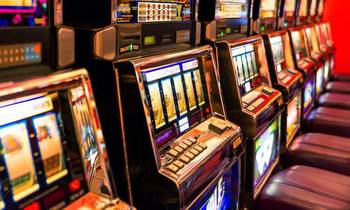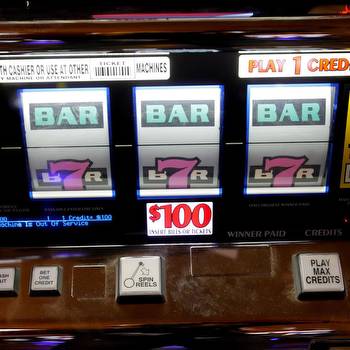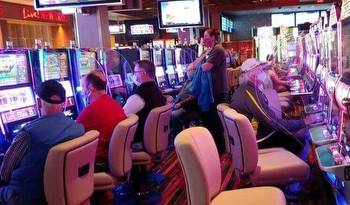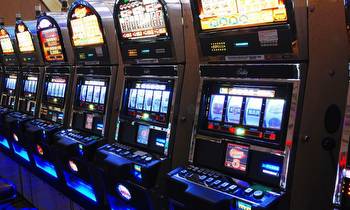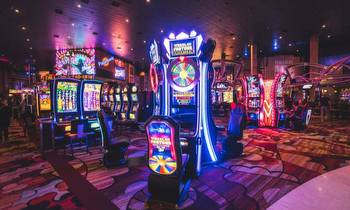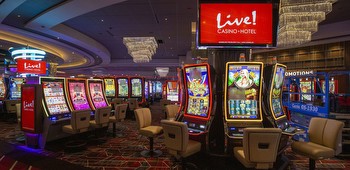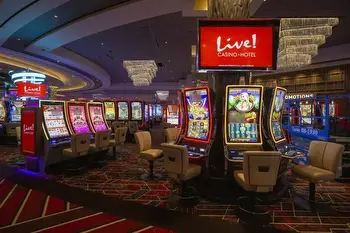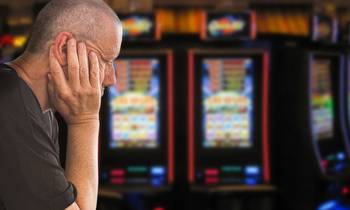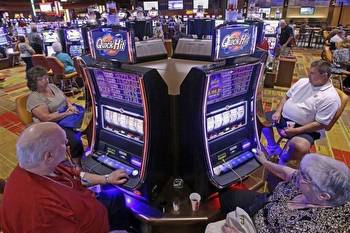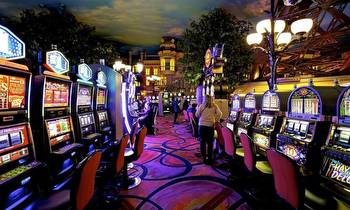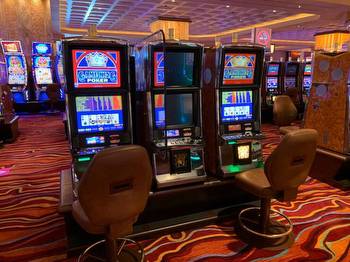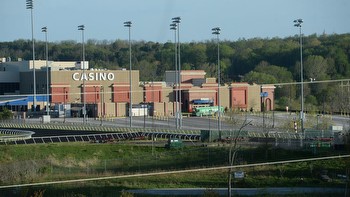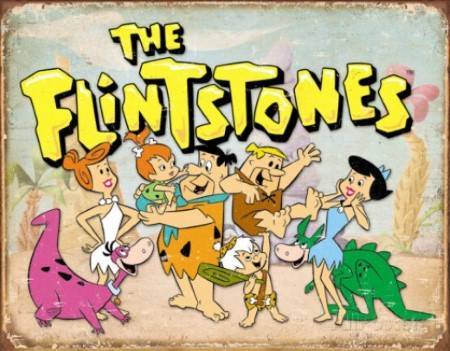Longtime Casinos Find Less Is More With Slot Machine Counts

Mohegan Pennsylvania, the first of the Keystone State’s 17 casinos, has a request pending with the Pennsylvania Gaming Control Board: Please let us reduce our number of slot machines.
In a submission filed in May and likely to be approved in coming months, the mid-sized casino near Wilkes-Barre states that shedding 120 machines to a count of 1,550 is designed “to more accurately reflect demand, for ease of access around the gaming floor, and to enhance patrons’ comfort, health and safety.”
Mohegan Pennsylvania is by no means alone in Pennsylvania. The gaming board just last week approved two requests from smaller casinos that will result in a combined net loss of 49 machines. Hollywood Casino Morgantown and Lady Luck Casino Nemacolin became the seventh and eighth Pennsylvania venues in the post-COVID era to receive approval to reduce their count.
Such alterations started in 2021, after some in the industry began finding through post-COVID reopenings — with mandatory gaming floor adjustments due to social distancing requirements — that they could generate as much or more revenue with fewer machines.
In appearances before the Pennsylvania board, casino executives have described the desire to get rid of older, under-utilized machines; the goal of giving customers more room and comfort; the benefit of opening more space for other amenities such as large sportsbooks; and the recognition that increased competition from other new casinos or gray-market machines means they have more capacity than is warranted.
And in each case, the casino managers have assured the state’s regulator that they anticipated no downturn in revenue from reducing the available games.
It’s not a trend unique to Pennsylvania. In many of the states that allow commercial casinos across the U.S., the more mature properties have found that hosting fewer machines than they originally thought proper can be a good thing both for customers and their own bottom lines.
“In a lot of cases, a significant or fair amount of operators are finding ways of doing more with less,” said Phil Bernard, managing director of gaming equipment for Eilers & Krejcik, a major gaming consulting and research firm.
Machines increasing after post-COVID drop
Eilers & Krejcik compiles data every quarter on fluctuations in the number of slot machines in North America. There are more than 1 million such gaming devices in the U.S. and Canada when counting not only commercial casinos but those run by tribes and the more neighborhood-oriented gambling locations such as exist widely in Illinois, Louisiana, and a few smaller states.
If drilling down to just what are considered U.S. casino locations, the E&K report for the second quarter of 2023 counted 392,071 machines, which represented an increase of about 11,000 from a year earlier but at least 24,000 fewer than in 2019, the last year before COVID’s impact. The modest increase in the past year resulted from new casinos opening in states such as Virginia, Illinois, and Nebraska, with their thousands of machines offsetting reductions in longtime venues.
Among states showing fewer machines, the report found a year-over-year reduction of 859 in Mississippi, 729 in New Jersey, and 719 in Missouri, which were all more than Pennsylvania’s net loss of 475 in a state where four so-called “mini-casinos” and one bigger one have opened in recent years.
Bernard said the COVID closures and reopenings led a number of casinos to strategize and reorient their floors in a way that might have been unlikely — or come far slower — if not for the pandemic’s effects.
“The pause allowed everyone to do things like rearrange their floors from a straight line to one with pods, to maybe fill a similar space with fewer machines but provide more enticing space for customers to walk through,” he said. “You create a better viewing experience for the consumer, a more effective merchandising experience between the operator and consumer, exposing them to a better range of machines if navigating the floor.”
Brian Wyman, executive vice president of The Innovation Group, a national consultant to the industry, notes that casinos in general are still seeing less foot traffic overall than before the pandemic, but the level of spending per visitor is still up — just as it was upon 2020 reopenings.
The reduced visitation means not as many machines are needed, which is crucial, Wyman said, at a time when finding labor is more difficult than ever. Having 100 fewer machines to maintain is a positive, especially if the ones you get rid of are 10 years old and played less frequently.
“The casinos are finding ways to do more with less,” Wyman reiterated. “This is all a function of many things, whether it’s the effects of more competition, the labor market, or just how people’s behavior has changed post-pandemic.”
Pennsylvania government depends on gaming
Despite all of the publicity in recent years over newer industry segments like sports betting and iGaming, the casino industry remains more heavily dependent on people pushing buttons on slot machines than doing anything else.
As a state that has widely legalized different forms of gambling both in person and online, Pennsylvania is as good an example as any state.
Its $5.51 billion in commercial gaming revenue in the recent 2022-23 fiscal year from casinos, online casino gaming, sports betting, truck stop video gaming terminals, and fantasy sports contests was easily an all-time high. While revenue increases in recent years have come from playing games or betting sports by phone or computers, brick-and-mortar slots play still generates more annual income than anything else — $2.45 billion, or 44.5%.
Due to its high tax rates across the board on the various types of gambling, Pennsylvania’s government derives more money from it than any other state including Nevada, with $2.37 billion in taxes generated in the recent fiscal year. Of the different forms of gambling, the state taxes slot machines at a higher rate than anything else, at 54%.
The state’s dependence on its share of slot machine income is evidently the reason for a regulation that casinos must obtain Pennsylvania Gaming Control Board approval any time they want to remove more than 2% of their machines. That’s not necessarily a requirement in other states, which have less to lose and thus may feel no need to sign off on a casino’s slot count.
So one after one for more than two years now, the majority of Pennsylvania’s casinos have applied to go smaller.
“Right now our floor is too big,” a Harrah’s Philadelphia executive said in June when the casino, by removing 145 machines to make room for a more centralized sportsbook, was petitioning for actually its second reduction since 2021.
When the larger Wind Creek Bethlehem stated its case in June 2022 for removing 983 older machines while adding 328 new ones, its officials described their desire to alter the overall layout so players wouldn’t be sitting in long rows beside one another.
“No one on an airplane really wants to sit in the middle seat,” a Wind Creek representative said. “That’s the same theory we’re going with.”
Still the bread and butter
All of these reductions in Pennsylvania have basically been offset by development of new casinos, so that the state had 25,291 machines in 17 properties in July, compared to 24,662 in 12 locations in July 2019. The average win from each machine per day is a little higher now, $262.95 compared to $254.63. (It was an unusually high $318.62 in the first COVID reopening month of July 2020, on just 15,659 machines.) Whatever the number of machines or casinos, slots in Pennsylvania have combined for between $2.3 billion and $2.5 billion in annual revenue in all non-COVID years over the past decade.
Ultimately, every casino executive in charge of such things weighs a lot of factors in determining the right slot count. One key, according to Bernard, is that machines should still be available for play at the busiest times on Friday and Saturday evenings, rather than any customers being forced to wait.
He said the data suggests that most reductions of machines in longtime U.S. casino venues have probably already occurred, and modest future growth overall is anticipated — again primarily due to new markets being opened in several states.
Whatever their number, whatever the design of a floor, whatever space they share with table games, sportsbooks, and restaurants, slot machines can be counted upon to be prominent on the minds of both executives and guests.
“Slots are the bread and butter of casino gaming and they’ll continue to be so,” Wyman said. “They will be incredibly important as the industry transitions to online gaming as well.”









